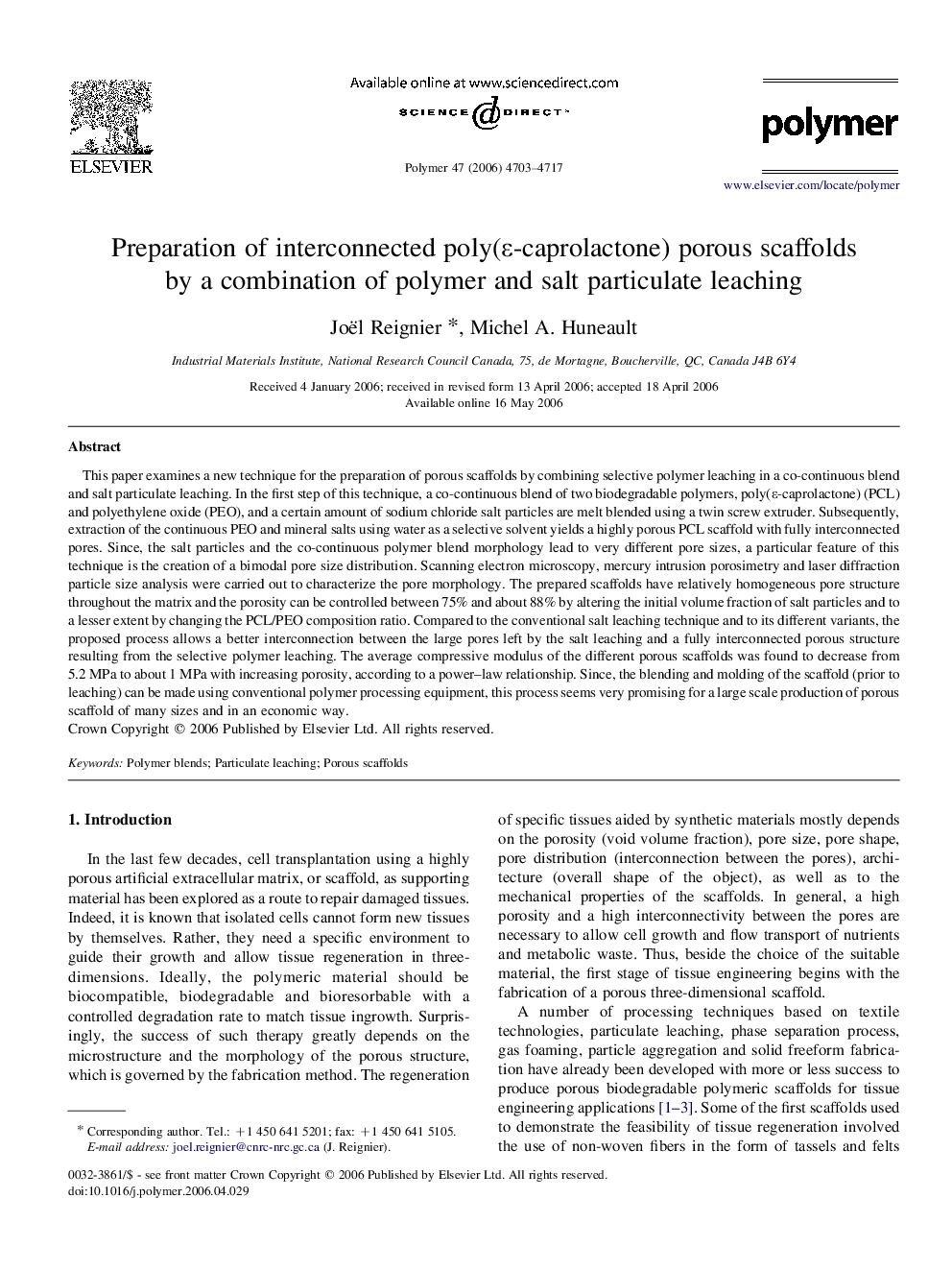| کد مقاله | کد نشریه | سال انتشار | مقاله انگلیسی | نسخه تمام متن |
|---|---|---|---|---|
| 5189512 | 1381186 | 2006 | 15 صفحه PDF | دانلود رایگان |
عنوان انگلیسی مقاله ISI
Preparation of interconnected poly(ε-caprolactone) porous scaffolds by a combination of polymer and salt particulate leaching
دانلود مقاله + سفارش ترجمه
دانلود مقاله ISI انگلیسی
رایگان برای ایرانیان
کلمات کلیدی
موضوعات مرتبط
مهندسی و علوم پایه
شیمی
شیمی آلی
پیش نمایش صفحه اول مقاله

چکیده انگلیسی
This paper examines a new technique for the preparation of porous scaffolds by combining selective polymer leaching in a co-continuous blend and salt particulate leaching. In the first step of this technique, a co-continuous blend of two biodegradable polymers, poly(ε-caprolactone) (PCL) and polyethylene oxide (PEO), and a certain amount of sodium chloride salt particles are melt blended using a twin screw extruder. Subsequently, extraction of the continuous PEO and mineral salts using water as a selective solvent yields a highly porous PCL scaffold with fully interconnected pores. Since, the salt particles and the co-continuous polymer blend morphology lead to very different pore sizes, a particular feature of this technique is the creation of a bimodal pore size distribution. Scanning electron microscopy, mercury intrusion porosimetry and laser diffraction particle size analysis were carried out to characterize the pore morphology. The prepared scaffolds have relatively homogeneous pore structure throughout the matrix and the porosity can be controlled between 75% and about 88% by altering the initial volume fraction of salt particles and to a lesser extent by changing the PCL/PEO composition ratio. Compared to the conventional salt leaching technique and to its different variants, the proposed process allows a better interconnection between the large pores left by the salt leaching and a fully interconnected porous structure resulting from the selective polymer leaching. The average compressive modulus of the different porous scaffolds was found to decrease from 5.2 MPa to about 1 MPa with increasing porosity, according to a power-law relationship. Since, the blending and molding of the scaffold (prior to leaching) can be made using conventional polymer processing equipment, this process seems very promising for a large scale production of porous scaffold of many sizes and in an economic way.
ناشر
Database: Elsevier - ScienceDirect (ساینس دایرکت)
Journal: Polymer - Volume 47, Issue 13, 14 June 2006, Pages 4703-4717
Journal: Polymer - Volume 47, Issue 13, 14 June 2006, Pages 4703-4717
نویسندگان
Joël Reignier, Michel A. Huneault,